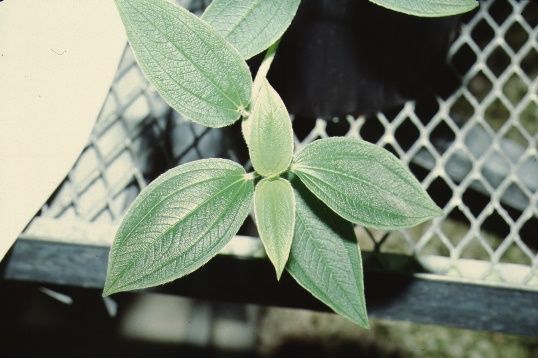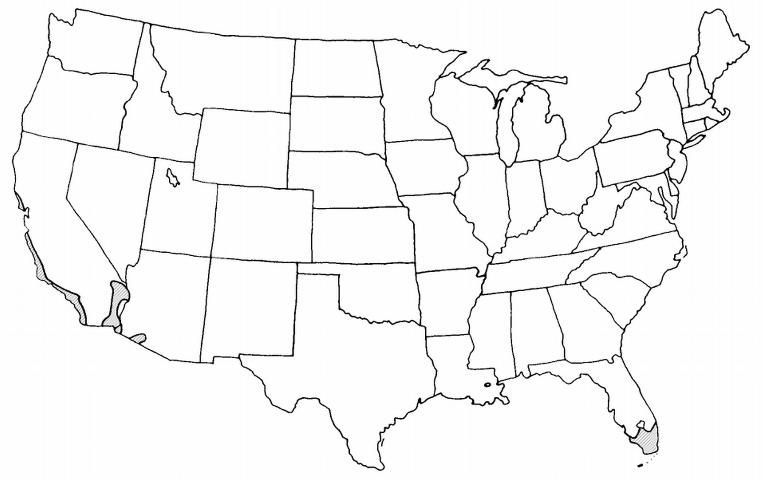Introduction
Dwarf tibouchina grows to about 2 inches tall and very tight to the ground. It makes a nice ground cover for a small area or can be placed in a hanging basket and allowed to droop over the side.

Credit: Edward F. Gilman, UF/IFAS

Credit: Edward F. Gilman, UF/IFAS

Credit: Edward F. Gilman, UF/IFAS
General Information
Scientific name: Tibouchina spp.
Pronunciation: tib-boo-KYE-nuh species
Common name(s): dwarf tibouchina, glorytree
Family: Melastomataceae
Plant type: ground cover
USDA hardiness zones: 10 through 11 (Figure 4)
Planting month for zone 10 and 11: year-round
Origin: not native to North America
Invasive potential: not known to be invasive
Uses: ground cover; cascading down a wall; container or above-ground planter; border
Availability: somewhat available, may have to go out of the region to find the plant

Credit:
Description
Height: 0 to 0.5 feet
Spread: depends upon supporting structure
Plant habit: prostrate (flat)
Plant density: dense
Growth rate: moderate
Texture: fine
Foliage
Leaf arrangement: opposite/subopposite
Leaf type: simple
Leaf margin: entire
Leaf shape: ovate
Leaf venation: pinnate
Leaf type and persistence: evergreen
Leaf blade length: less than 2 inches
Leaf color: green
Fall color: no fall color change
Fall characteristic: not showy
Flower
Flower color: purple
Flower characteristic: summer flowering; fall flowering
Fruit
Fruit shape: unknown
Fruit length: unknown
Fruit cover: unknown
Fruit color: unknown
Fruit characteristic: inconspicuous and not showy
Trunk and Branches
Trunk/bark/branches: not applicable
Current year stem/twig color: green
Current year stem/twig thickness: thin
Culture
Light requirement: plant grows in part shade/part sun
Soil tolerances: acidic; slightly alkaline; sand; loam; clay
Soil salt tolerances: poor
Plant spacing: 18 to 24 inches
Other
Roots: not applicable
Winter interest: no special winter interest
Outstanding plant: not particularly outstanding
Pest resistance: long-term health usually not affected by pests
Use and Management
Full sun provides for the best flower display, although flowers are not nearly as showy as those on the shrubby species of tibouchina. The plant will be grown mainly for the unusually small foliage and compact growth habit.